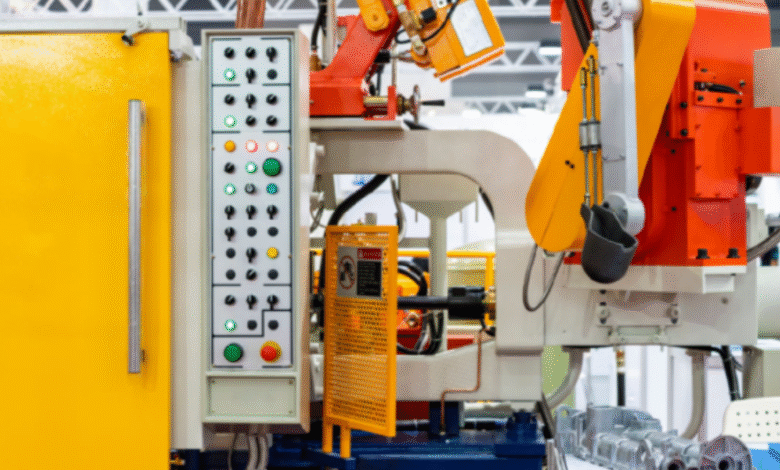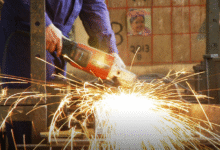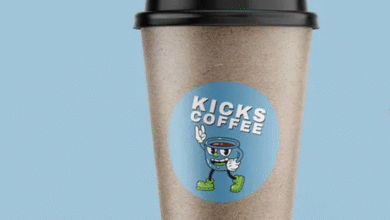The Critical Role of Aluminum Die Casting Parts in Modern Manufacturing

From car engines and LED housings to industrial machinery and consumer electronics, aluminum die casting parts play an irreplaceable role in today’s manufacturing ecosystem. As industries push for lighter, more efficient, and highly durable components, aluminum remains the go-to material, and die casting emerges as one of the most effective methods to shape it.
This article explores how aluminum die casting parts have revolutionized product engineering, the manufacturing process behind them, their applications across sectors, and why businesses are increasingly relying on this technology for performance, cost, and sustainability.
Understanding Aluminum Die Casting Parts
Aluminum die casting parts are components manufactured through a high-pressure process where molten aluminum is injected into hardened steel molds (called dies) to form precise and complex shapes. These parts are known for their dimensional accuracy, strength, corrosion resistance, and smooth surface finish.
Due to the nature of the process aluminum die casting parts can be produced in large volumes with remarkable consistency. This makes them ideal for industries that require mass production without sacrificing mechanical integrity.
See also: The UV VIS Machine: A Core Instrument in Modern Analytical Laboratories
Why Aluminum?
Aluminum is chosen over other metals for a number of key reasons:
- Lightweight yet strong: Ideal for automotive and aerospace applications where weight reduction is critical.
- Excellent thermal conductivity: Makes it perfect for heat sinks, electronic housings, and cooking appliances.
- Corrosion-resistant: Useful in marine, outdoor, or humid environments.
- Non-magnetic and non-toxic: Suitable for sensitive electronics and food-grade applications.
- Recyclable: A sustainable material that retains its properties even after multiple recycling cycles.
These properties make aluminum die casting parts the ideal solution for modern-day industrial challenges.
The Die Casting Process: From Molten Metal to Functional Parts
1. Mold Design and Tooling
The process starts with the design and creation of dies (molds), typically from hardened steel. These molds define the shape, dimensions, and fine features of the final part.
2. Melting and Injection
Aluminum ingots are melted at high temperatures (around 660°C) and injected into the die cavity under pressures ranging from 1,500 to 30,000 psi. This high-pressure injection ensures complete filling of the mold and sharp detail reproduction.
3. Cooling and Solidification
Once the aluminum fills the mold, it quickly solidifies. The rapid cooling improves the part’s structural integrity and helps maintain dimensional accuracy.
4. Ejection and Trimming
After solidification, the die opens and ejects the part. Excess materials, such as sprues and flash, are trimmed off, and the part undergoes finishing processes like deburring or sanding.
5. Secondary Processes
Some aluminum die casting parts may require machining, painting, anodizing, or coating depending on the application.
Types of Aluminum Die Casting Parts
There’s a wide range of parts that can be produced using this method:
- Automotive Components: Transmission housings, engine covers, heat sinks, brackets
- Electronic Enclosures: Laptop bodies, LED housings, cooling fins
- Appliance Parts: Mixer blades, washing machine panels, air conditioner fins
- Aerospace Parts: Cabin hardware, small engine parts, sensor housings
- Telecommunication Parts: Antenna bases, signal device covers, mounts
Each of these components benefits from the unique qualities of aluminum and the precision offered by the die casting process.
Benefits of Aluminum Die Casting Parts
✔️ Precision Engineering
Die casting produces parts with extremely tight tolerances (as low as ±0.002 inches), eliminating the need for secondary machining in many cases.
✔️ Surface Finish and Aesthetics
The natural smooth finish of aluminum cast parts can be further enhanced through coatings or polishing, making them suitable for visible consumer products.
✔️ Cost-Effective at Volume
After initial tooling is created, the cost per part drops significantly with scale, making die casting economical for large production runs.
✔️ Structural Strength
The pressure-based casting process enhances the mechanical strength of aluminum die casting parts, making them capable of handling stress, load, and temperature variations.
✔️ Energy Efficiency
Aluminum’s low melting point and recyclability make it more energy-efficient than many alternatives in both the casting process and lifecycle
Applications Across Key Industries
🚗 Automotive Industry
Automakers rely heavily on aluminum die casting parts to reduce vehicle weight, improve fuel efficiency, and meet emission regulations. Common parts include transmission cases, engine blocks, and structural brackets.
✈️ Aerospace and Defense
For non-critical applications in aircraft, die cast parts offer both precision and lightweight construction. The defense industry also uses them for casings and support brackets.
🏠 Home Appliances
Refrigerators, fans, cooktops, and air conditioners include aluminum parts that offer longevity and resistance to moisture and heat.
📡 Telecommunications
Enclosures for telecom equipment require thermal management and electromagnetic shielding—both efficiently handled by die cast aluminum.
⚙️ Industrial Machinery
Gearbox housings, valve bodies, and pump casings are all examples of aluminum die casting parts in heavy equipment.
How to Select a Reliable Supplier for Aluminum Die Casting Parts
When outsourcing or choosing a vendor, here are critical factors to consider:
- Experience and Industry Specialization: Do they understand your sector’s standards?
- Tooling Capabilities: Can they design and maintain custom dies?
- Production Scale: Do they accommodate both prototyping and mass production?
- Material Expertise: Are multiple aluminum alloys like A360, A380, or ADC12 available?
- Finishing Options: Do they provide post-processing like anodizing, painting, or machining?
- Quality Assurance: Look for certifications such as ISO 9001 or IATF 16949, especially for automotive parts.
Sustainability of Aluminum Die Casting Parts
With the increasing global emphasis on sustainable manufacturing, aluminum die casting parts stand out for their environmental advantages:
- 100% Recyclability: Aluminum can be recycled without loss in quality.
- Lower Carbon Footprint: Less energy is required for melting and shaping.
- Waste Reduction: Precision casting reduces material waste during production.
- Eco-friendly Coatings: Modern suppliers now use non-toxic and low-VOC coatings.
As industries aim to align with green practices, aluminum die casting is fast becoming a preferred method in eco-conscious design.
The Future of Aluminum Die Casting Parts
Innovations in Industry 4.0, AI, and machine learning are already reshaping the way aluminum die casting parts are produced:
- Smart Casting Machines: Real-time feedback loops and self-calibration
- Simulation-Based Design: Detects potential issues before production begins
- Automation and Robotics: Increases efficiency and reduces labor costs
- Additive-Subtractive Hybrids: Combining die casting with 3D printing and CNC machining for more complex geometries
With these advancements, expect even more robust, lighter, and cost-efficient aluminum parts in the near future.
Conclusion
Aluminum die casting parts have become a linchpin of modern manufacturing, offering unmatched precision, scalability, and performance. Whether you’re a startup needing quick prototyping or a global manufacturer requiring hundreds of thousands of consistent components, aluminum die casting provides a reliable and efficient pathway.
As technology evolves and demand continues to grow, investing in high-quality aluminum die casting parts is not just a smart move—it’s a necessity for innovation, sustainability, and competitiveness in the industrial world.





